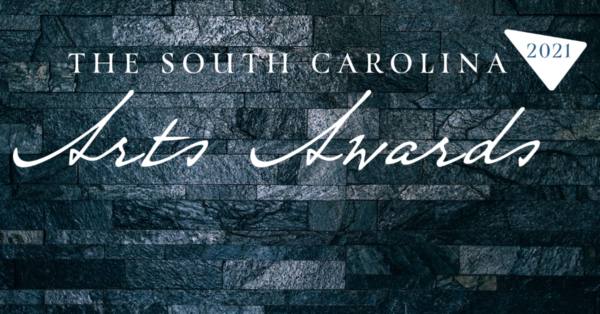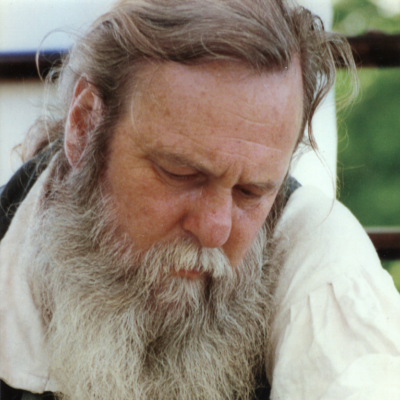S.C. Arts Awards: Robert W. Hill III
2021 Recipient Feature Series

As the day nears for the 2021 South Carolina Arts Awards, The Hub is focusing on this year’s recipients: seven receiving the South Carolina Governor’s Awards for the Arts and two receiving the Jean Laney Harris Folk Heritage Award, which are managed jointly by the South Carolina Arts Commission and McKissick Museum at the University of South Carolina.
Robert W. Hill III
Advocacy Category: American Long Rifle & Accoutrements | Folk Heritage Award
 Robert W. Hill III began making duck decoys in his early 20’s, and eventually added other figures and animals to his repertoire. Hill’s work ranged from traditional whittling to refined sculptures. Both of his grandfathers were accomplished blacksmiths, woodcarvers, and gun stockers. While neither of them lived long enough to teach Hill their skills, he grew up an avid outdoorsman with an interest in the skills that supported his passion, which included decoy carving, forging knives, and carving gun stocks. In 1985, his desire to own a handmade muzzle- loading rifle drove him to learn more about the traditional crafts of blacksmithing, tool making, stock carving, inlaying, and engraving.
Robert W. Hill III began making duck decoys in his early 20’s, and eventually added other figures and animals to his repertoire. Hill’s work ranged from traditional whittling to refined sculptures. Both of his grandfathers were accomplished blacksmiths, woodcarvers, and gun stockers. While neither of them lived long enough to teach Hill their skills, he grew up an avid outdoorsman with an interest in the skills that supported his passion, which included decoy carving, forging knives, and carving gun stocks. In 1985, his desire to own a handmade muzzle- loading rifle drove him to learn more about the traditional crafts of blacksmithing, tool making, stock carving, inlaying, and engraving.
While attending art shows across the region, Hill had the opportunity to watch and learn from master engraver Jack Spain. Spain would share tips on engraving and teach Hill how to make his own engraving tools. Back at home, Hill practiced engraving on scrap metal, constantly comparing his work to examples of engraving on historic firearms. He attempted to mimic the work of the Gillespie family of gunsmiths from Pickens County and the Vogler family of Salem, North Carolina. These Carolina gunsmithing families had established styles that were recognized as the best representatives of America’s golden age of gunsmithing. Hill also developed a relationship with master gunsmith Frank Burton, who was running a shop out of Pawleys Island. Burton shared his collection of original Carolina rifles with Hill, who was soon producing his first muzzle-loader.
The untimely death of Burton prevented Hill from completing a long-term apprenticeship with the master gunsmith, but he certainly made the most of his time with the artist. Hill attended Dixon’s Gunmaker’s Fair in Kempton, Pennsylvania, a conference of traditional gun makers and after a year of studying and experimenting, Hill completed his first rifle. He took the rifle to the next conference in Kempton and entered it in the competition so he could receive the judges’ critique sheet to learn how to improve. To his surprise, his first rifle won a second- and third- place ribbon in the show.
Hill recognized the need to preserve the craft and continued his training by studying historic firearms from the Carolinas. Hill embraced the chance to work with older makers. Today, he is part of a thriving community of gunsmiths and is recognized by gunsmiths across the region as both an exemplary artist and an advocate.
The success of his first gun spurred him on to continue gun making and share what he knew with others who wanted to learn the craft and, like him, did not have access to formal training.
Hill began demonstrating at Kings Mountain State Park in 1986 and continued to do so until 1999. He has promoted the art of traditional gunsmithing to thousands of people in the Southeast over the past thirty years. He continues to demonstrate gun building techniques, including carving and engraving, at living history events, battlefields, museums, and historic sites. These include Middleton Place, Charlestown Landing, Historic Camden, Horry County Museum, L.W. Paul Living History Farm, House in the Horseshoe, Guilford Courthouse, Colonial Williamsburg, Georgetown County Museum, and the Lake City Museum. He has been the gunsmith at the North Carolina State Fair’s Village of Yesteryear for over twenty years and was instrumental in organizing the South Carolina Muzzleloader Conference at the South Carolina State Museum in 2015, where he volunteered as an event organizer, demonstrator, and lecturer.
In 1994, Hill co-founded the South Carolina Artist Blacksmith Association, later to become the Phillip Simmons Artists Blacksmith Guild of South Carolina. He served as president of the group for ten years and frequently demonstrated forging and engraving techniques. He is also a member of the Contemporary Longrifle Association. In 2014, Hill was documented in the Survey of South Carolina Tradition Bearers a joint project of McKissick Museum and the S.C. Arts Commission.
Through demonstrations and lectures, he has educated people about gun makers from South Carolina to recognize and preserve the contributions of the artists of the State’s past artists. Hill has been instrumental in passing his skills onto others, including his son and grandson, assuring a legacy of continued preservation, study, and celebration of the traditional craft of gunsmithing.
The South Carolina Arts Awards stream live Monday, May 24, 2021. The festivities begin at 6 p.m. on SouthCarolinaArts.com. There is no in-person event in 2021. The virtual ceremony will be available on demand from the S.C. Arts Commission YouTube Channel after the livestream presentation.
Meet the Recipients
Use these links to read the long-form bios of the other 2021 South Carolina Arts Awards recipients.
- I. ColaJazz Foundation
- II. Dr. Tayloe Harding
- III. Jugnu Verma
- IV. Jennifer Clark Evins
- V. Colonial Life
- VI. Charlton Singleton
- VII. Robert W. Hill III
- VIII. Marjory Wentworth
- IX. Tom Flowers

